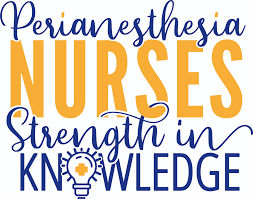The first week of every February is designated as PeriAnesthesia Nurse Awareness Week, a week to raise awareness of and appreciation for the nurse in this specialty.
As with many other areas of nursing, population changes and national health trends are shifting this specialty. Perianesthesia nurses are a patient’s advocate and guardian during any procedure that requires anesthesia. As the largest generation, the baby boomers, continues to swell the population of seniors, the need for perianesthesia nurses who are skilled with older adults is critical. And as some healthcare shifts away from hospital settings, perianesthesia nurses can expect to find more job opportunities in ambulatory surgery sites.
Nurses in this area are with a patient before, during, and after anesthesia, so they provide essential medical care while also using their understanding about personality and the human condition to make the process as easy as possible for patients.
Before anesthesia, a perianesthesia nurse will help a patient prepare for whatever procedure they are having. The nurse is responsible for educating the patient about anesthesia and answering any questions they or their family members might have. As some people are hesitant about anesthesia, may have had a bad reaction to it before, or are nervous about being sedated, nurses need to be able to offer factual advice that addresses the needs of each person. They are also there to let the patient know they will be with them the entire time, even when the patient is under anesthesia and not aware. Sometimes, just letting a patient know they are not alone is a huge relief.
During surgery, perianesthesia nurses shift their focus from a fully awake patient to one that is now under anesthesia and unable to advocate for themselves. This is when the focus shifts to the details that can be almost imperceptible. Nurses watch for any changes in vital signs that could signal a patient is in distress. But one of the biggest skills perianesthesia nurses are well-known for is their ability to watch a human body for small changes. Changes in skin tone, breathing, or muscle movement are of critical importance for the perianesthesia nurse. And because they will care for patients of all ages, knowing what is expected and what is not at each age is essential.
As the patient moves into recovery, the perianesthesia nurse is still at bedside, but this time with a dual focus—on the patient who is adjusting to the anesthesia wearing off and on those same body signals which now change with the patient coming out of a sedated state. People react very differently in this phase of recovery, so again the perianesthesia nurse has to know what to expect and how to help guide a patient through this initial phase.
Minority perianesthesia nurses are especially needed. A nurse who understands a patient’s language, culture, and customs will be much more in-tune with what the patient might be concerned with. If they are frightened, speaking in their first language will be easier, and having a nurse who can communicate easily with them will eliminate stress and confusion. When they are in recovery, the same kind of communication is beneficial to the patient and to the rest of the healthcare team as well.
As an advocate for patients when they are unable to be their own advocate, perianesthesia nurses have a significant role in patient care. This is a great week to honor all they do.
- Is the FNP Program Right for You? - April 24, 2024
- WOC Nurses Week Highlights Specialty - April 16, 2024
- Honoring Radiology Nurses Day on April 12 - April 12, 2024



